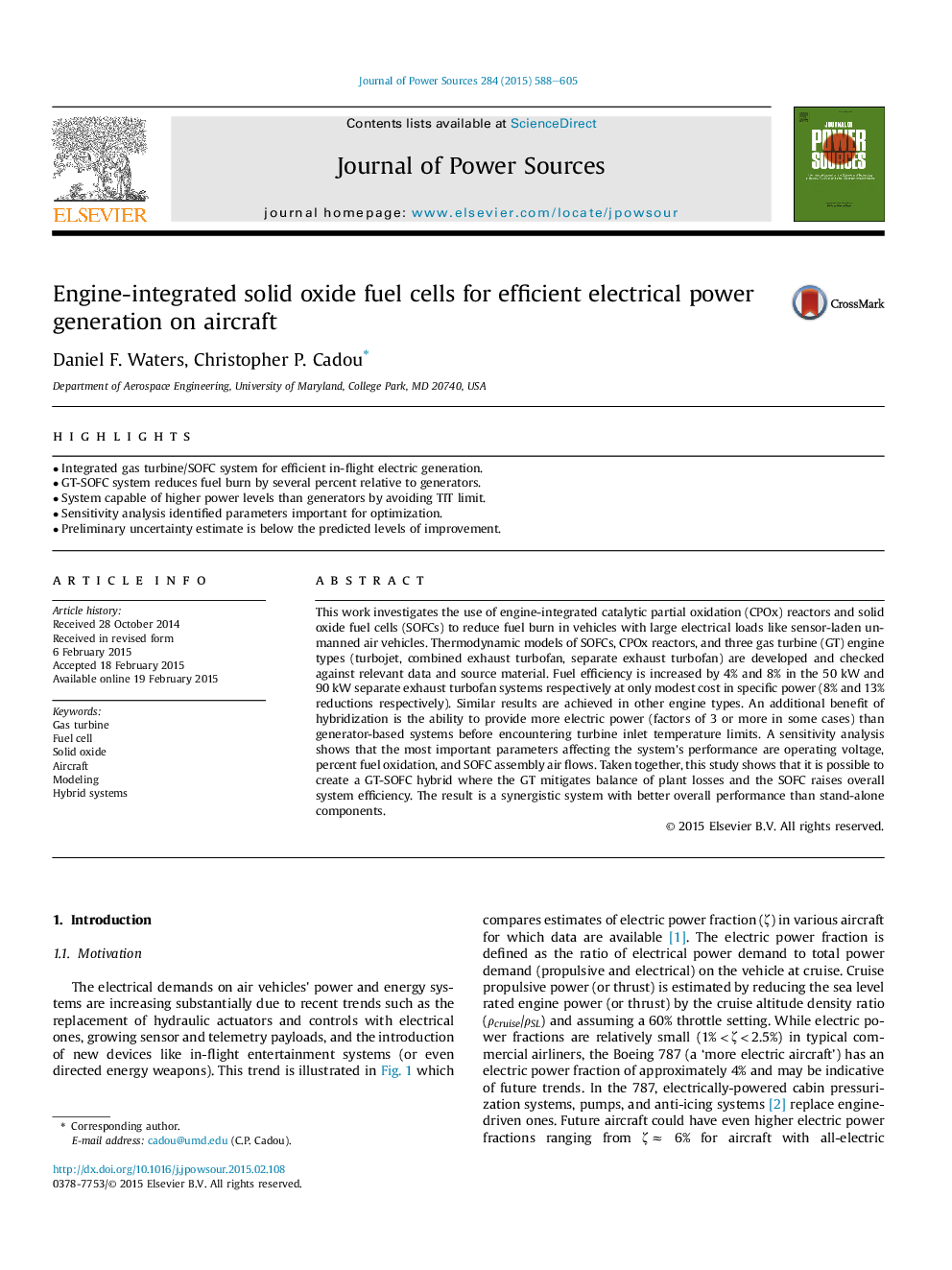| Article ID | Journal | Published Year | Pages | File Type |
|---|---|---|---|---|
| 7732694 | Journal of Power Sources | 2015 | 18 Pages |
Abstract
This work investigates the use of engine-integrated catalytic partial oxidation (CPOx) reactors and solid oxide fuel cells (SOFCs) to reduce fuel burn in vehicles with large electrical loads like sensor-laden unmanned air vehicles. Thermodynamic models of SOFCs, CPOx reactors, and three gas turbine (GT) engine types (turbojet, combined exhaust turbofan, separate exhaust turbofan) are developed and checked against relevant data and source material. Fuel efficiency is increased by 4% and 8% in the 50Â kW and 90Â kW separate exhaust turbofan systems respectively at only modest cost in specific power (8% and 13% reductions respectively). Similar results are achieved in other engine types. An additional benefit of hybridization is the ability to provide more electric power (factors of 3 or more in some cases) than generator-based systems before encountering turbine inlet temperature limits. A sensitivity analysis shows that the most important parameters affecting the system's performance are operating voltage, percent fuel oxidation, and SOFC assembly air flows. Taken together, this study shows that it is possible to create a GT-SOFC hybrid where the GT mitigates balance of plant losses and the SOFC raises overall system efficiency. The result is a synergistic system with better overall performance than stand-alone components.
Related Topics
Physical Sciences and Engineering
Chemistry
Electrochemistry
Authors
Daniel F. Waters, Christopher P. Cadou,
